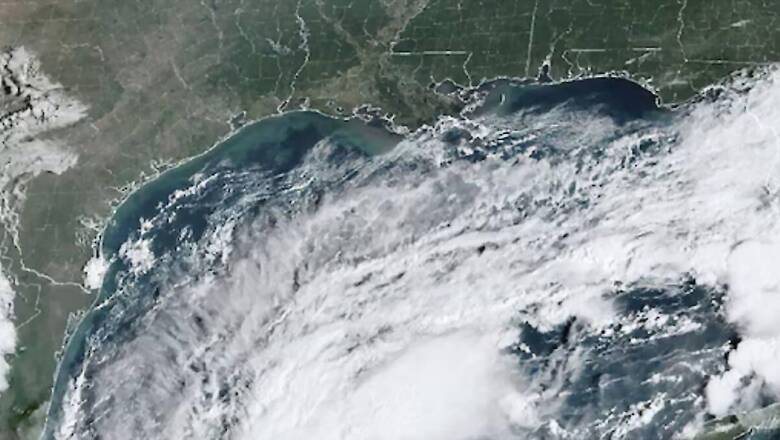
views
The devastating consequences of hurricanes Milton and Helene serve as a stark reminder of the escalating dangers posed by climate change. This sheds light on the urgent need for heightened awareness and preparedness as climate change introduces unpredictable shifts in hurricane patterns.
Hurricane Milton originated from a tropical low-pressure system in the western Caribbean Sea, rapidly intensifying in the Gulf of Mexico. On October 7, it reached its peak as a Category 5 hurricane, with maximum sustained winds of 290 kmph and a minimum central pressure of 897 millibars. Milton is now recognised as one of the most intense hurricanes ever recorded in the Atlantic region. After fluctuating in strength, it made landfall near Siesta Key, Florida, on October 9 as a Category 3 hurricane, with winds of 193 kmph.
Just 10 days before Milton’s landfall, Hurricane Helene struck Florida, marking the deadliest storm since Hurricane Katrina in 2005. It struck on September 26 and led to unprecedented flooding throughout the southeastern part of the country. The aftermath of Helene saw communities being in shambles when Milton arrived.
What is a hurricane?
A hurricane is a massive tropical storm that packs winds of at least 119 kmph and develops in the Atlantic and the northeastern Pacific oceans over the warm waters of the sea. These storms are destructive through their high winds, rain and storm surges.
What causes hurricanes?
Hurricanes of the Atlantic can be drawn back to Africa where they originate, reports Metro citing the National Oceanic and Atmospheric Administration. Westward winds collide with warm waters and the change in temperature between the air and sea is what creates a storm.
Link between climate change and hurricane
According to the Environmental Defence Fund, the ocean surface temperature rises with global temperatures. This increases the wind strength and intensity of the hurricanes and increases the precipitation amounts that the hurricanes occur. For instance, human-induced climate change increased Hurricane Helene’s rainfall by around 10% and wind speed by approximately 11%, according to World Weather Attribution scientists in the latest brief study.
Hurricane Helene delivered more than 40 trillion gallons of rain. As per the study, the destructive force would have been smaller had there not been human-induced climate change.
Hurricane risks are worsened by sea level rise as it intensifies storm surges on the coast. Rising seas make storm surges worse because sea level rises with global warming, and more water from a storm surge can flood inland. The sea level is projected to rise by between 29cm and 82cm at the close of the century as the sea becomes warmer, according to the University Corporation for Atmospheric Research.
Recent sequences of storms have all been intensified by the planet being heated up. Storms can be up to twice as likely to form now compared to the preindustrial period, according to the World Weather Attribution.
Anthropogenic climate change increased the amount of rainfall from each of these events: Katrina in 2005 by 4%, Irma in 2017 by 6%, Maria in 2017 by 9%, Florence in 2018 by 5%, Dorian in 2019 by 5-18% Ian in 2022 by 18% and Harvey in 2017 by 7-38%, Dr Fredi Otto, lead of the World Weather Attribution, an international group of scientists and meteorologists, tells Metro.




















Comments
0 comment